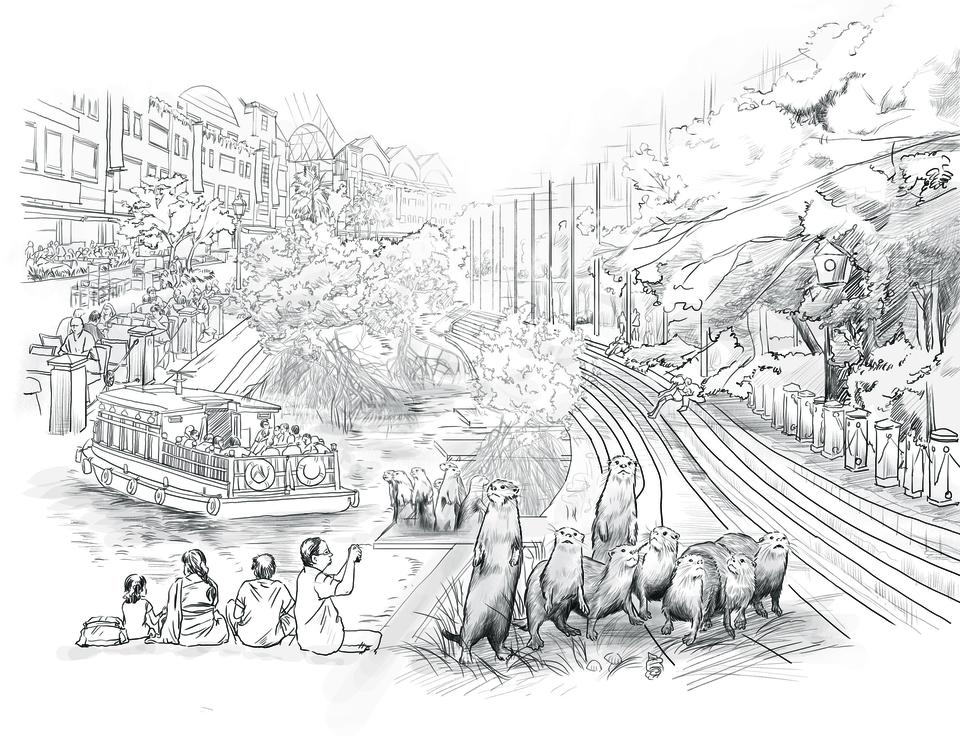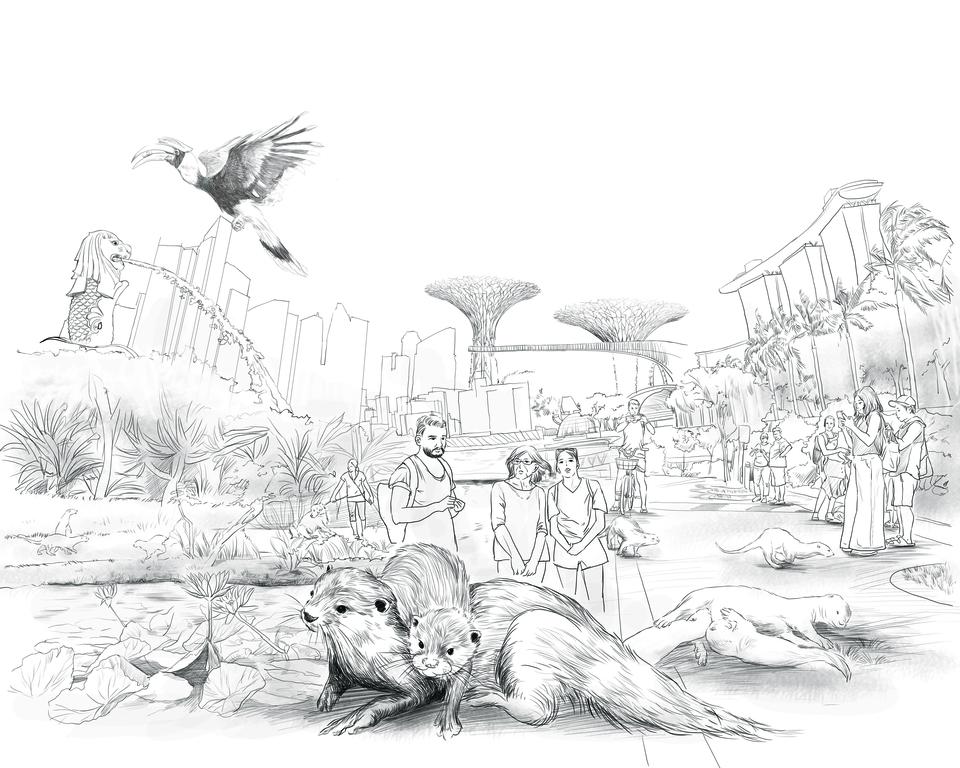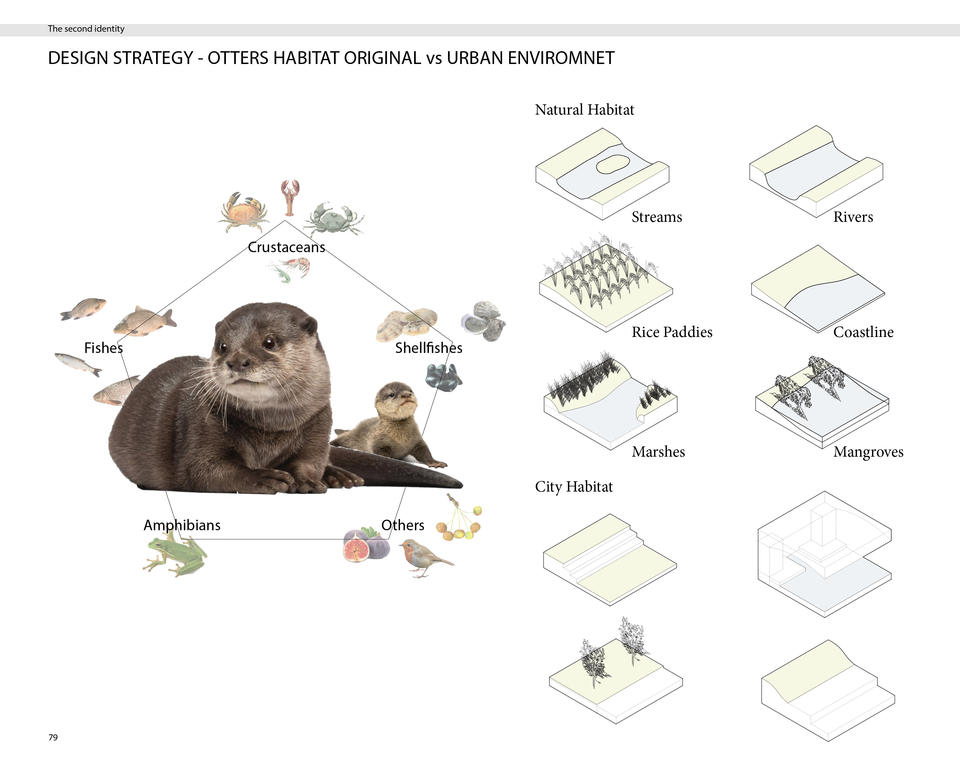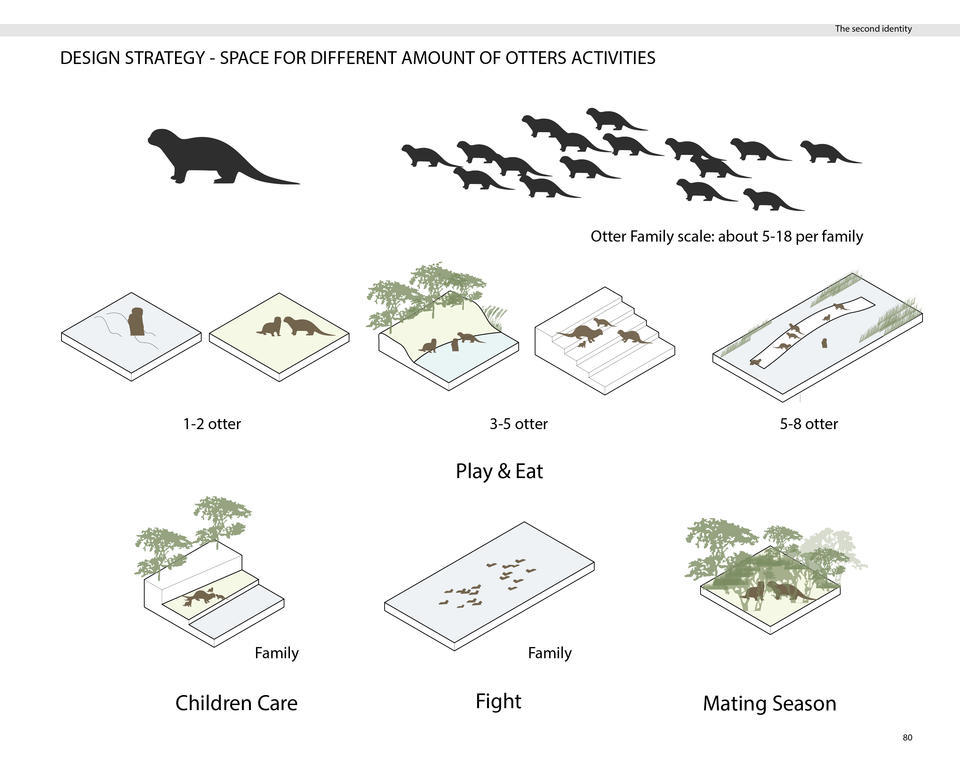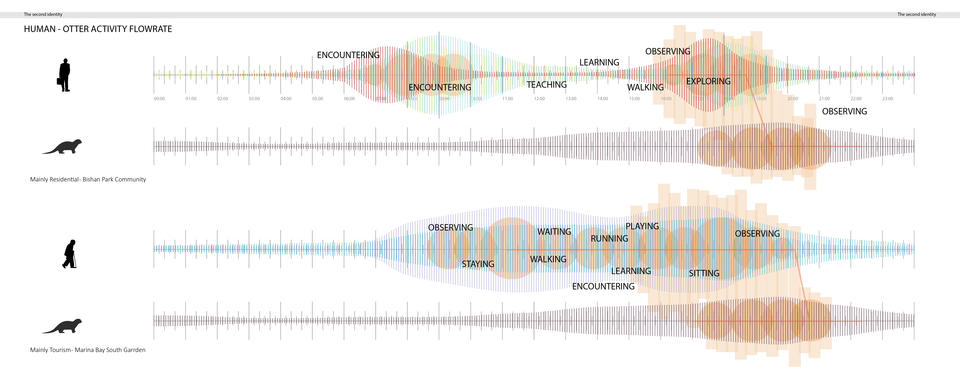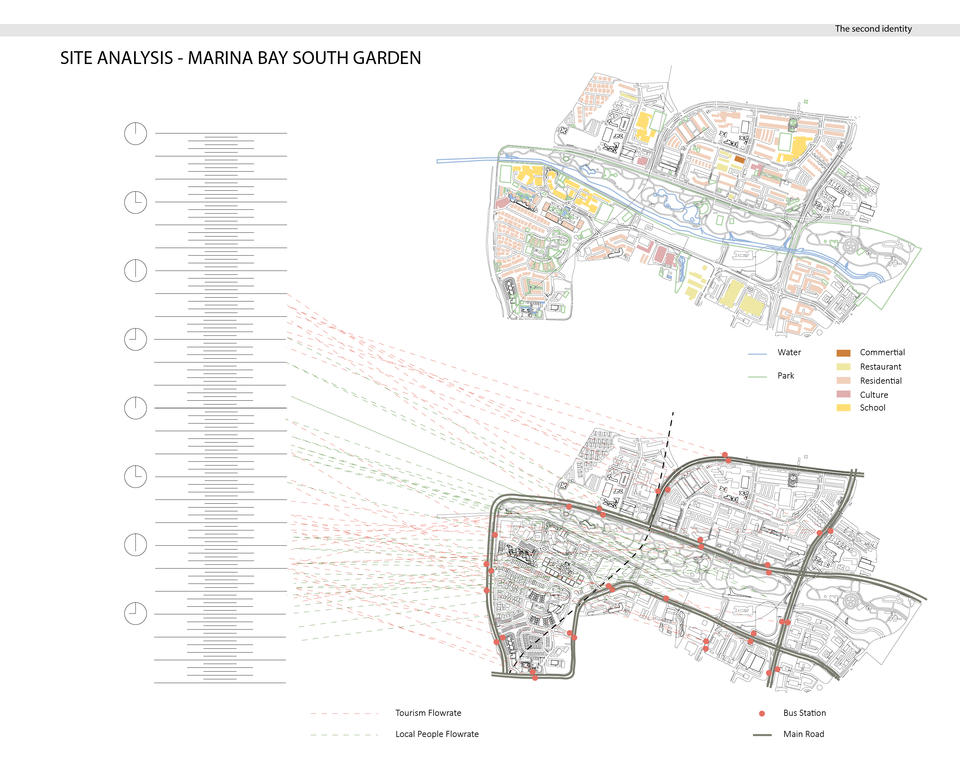UTOPIA
Utopia is a proposal that makes reality better. In a city urban environment that humans as dominant, I believe there will always be a better model of the relationship between humans and urban animals. In this particular project, my proposal is to try to find a better Ha-ha distance between otters in Singapore and the people who are living there.
PROJECT STATEMENT
This project is an experiment to study how to use landscape design to deal with various senses of the distance between humans and animals.
We all know that in a human-dominated urban environment, animals are a relatively vulnerable group. When human beings are planning cities, they rarely consider the feelings of urban animals, which are a neglected part. This is an opportunity for us to reconsider the relationship between humans and animals and between humans and nature.
In the course of our daily life, we may hear early morning bird calls, see squirrels and hares searching for food on the lawn. However, most of what we thought was their cute looks and did not consider whether the sound of human cars affected their habitat or whether the urban facilities of humans changed their original living environment. Therefore, how to use landscape techniques to keep human beings in their daily lives without disturbing the lives of urban animals would be a very important issue.
Although human beings are self-centered, in fact, any species and even nature are self-centered, all living things are connected together, so we shouldn’t only care about the short-term self-center benefit, then human survival will not be sustainable in the long run. For longer-term
selfishness, we should also consider several requirements for different “citizens”.
There are diverse types of relationships between people and otters in this project. We have areas that people are connected with the otters by urban structures that suitable for people. The otters cannot walk over to the human activities area, but humans can step into the range of the otters. There are also zones that completely separate people and otters by water and plants so that they will not interfere with each other. Some of the separate zones could let them can see each other as a kind of long-distance line-of-sight communication. Some completely block the eyesight of both by heavy branches of trees to totally hide either humans or otters from each other. This design could be further conduct by discussion through a variety of designs, such as what kind of conflicts or stories will occur between people and otters under these conditions, and I hope it will be helpful on research about the relationship between people and more urban animals.
▲ As one of the most important elements of urban ecology, urban animals are close to us. Many animals have become more or less accustomed to the urban living environment, such as the otters in Singapore. by learning to use human urban facilities and adjusting their diets. This project mainly analyzes the time, purpose, and area of activities of people and otters in Singapore as a basis, then discusses the different new sense of distance between people and otters.
Proposal Collage sketch & Existing Collage sketch
▲ Otters preferred habitat & Diagrams shows different spaces for different amount of otters
As one of the species that benefit from the “Garden City Project”, Singapore otters are smart adorable creatures that know how to live swagger in a human city. However, the lack of their privacy made them aggressive sometimes. The natural habitat of otters are streams, rivers, rice paddles, coastline, marshes, and mangroves with clean water. In the modern city, they usually find steps, lawns, and places under the bridge as their entertainment location.
The otters also change their diet to fit Singapore well. There are different otters’ families that dominate the different parts of Singapore’s rivers. They often walk alone for hunting or playing, unless it’s their mating season or they have a family activity. As a result, I drew several diagrams for a different amount of otter’s activities. Some of them are closer to their natural habitat, some of them are more like a place that humans can also go.
I basically work with two different types of water boundaries, but both were recorded the existent of otters in the past. These two sites were connected by the river, one is Bishan Park, which surrounded by lots of residential buildings and schools. It had different bank arrangements, and the river is artificial nature. The other one is Bay South Garden, which is a famous tourist attraction in the world. The bank condition is quite simple, with a narrow range of plantations and a hard slope into the water.
DESIGN STRATEGY
DESIGN PROGRESS
Image
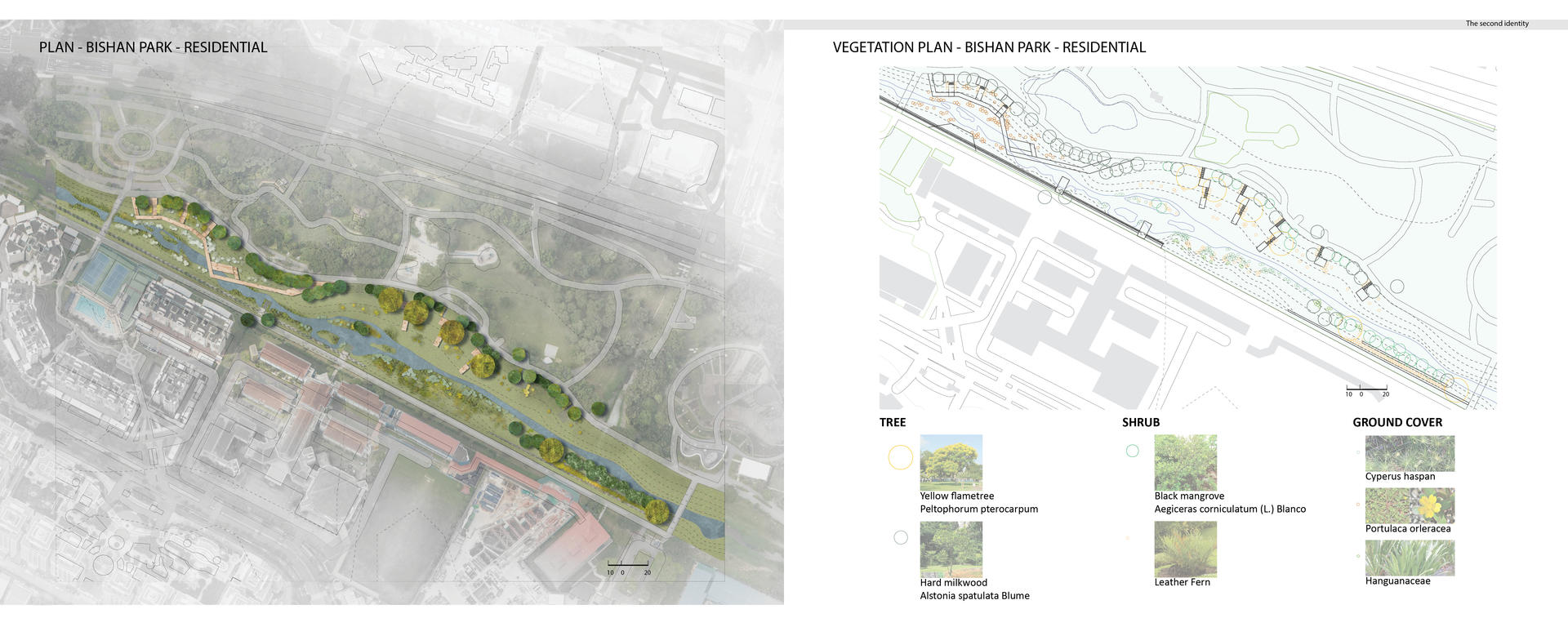
▲ The main idea of the west part is to introduce people closer to the river as a guest, especially while there are otters, people could sit under the shade of the trees and observing them quietly. In the middle, people can sit at one side of the river, with designed natural otter habitats on the other side. People could see how the otters are living in daily life. The right part creates a totally shelter for otters, to keep them away from human eyesight and footsteps. The otters could choose where they want to stay, and people could also choose to stay wait for them to show up, or just leave.
Image
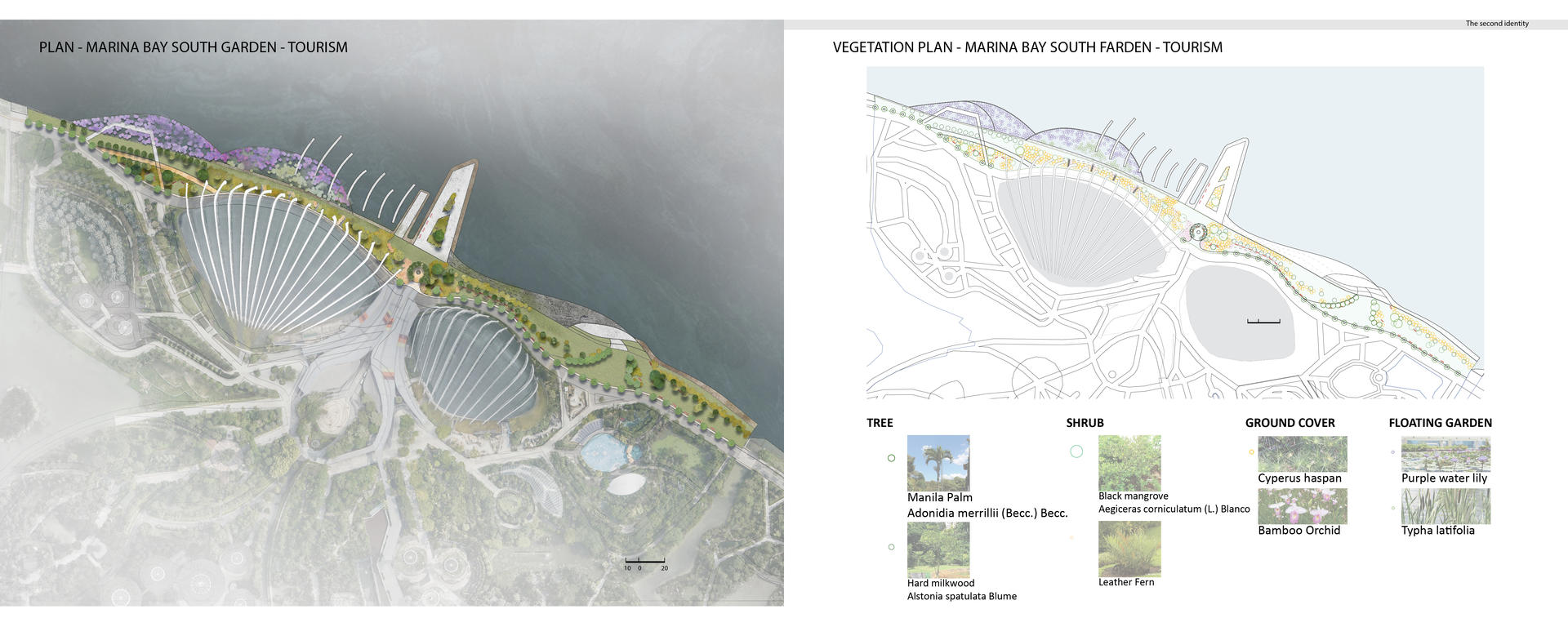
▲ The middle of those two greenhouses are the entrances of these two houses, so there are always many people hanging around there. I separate most of the otter's areas (which is near the water) and the human activities here, especially on the very left and very right. There are decks only for otters and deck only for humans observing in the middle.
CONCLUSION
Combining human and animal activities to design is something I have never experienced before. My original idea was to make some movable devices that could be used by humans during peak human activity and for otters during peak otter activity. But this is actually blurring the boundaries between humans and otters to a large extent. This is not what I want to see, because it may intensify the conflict between Singaporeans and otters.
After that, my idea became to create some urban facilities, where otters can have their own underground passages, so that they do not interfere with human life and are invisible to each other. However, the status of otters will be constrained in Singapore. After that, I decided to start with the different scale of humans and otters, and the different habitat requirement of them. I also tested several landscape techniques.
I think that the amount of research needed for this project is very large, because it is related to many aspects, such as the flow of Singaporean in various regions and different time periods, the life patterns of Singaporeans, the frequency of otter’s activities that recorded in Singapore, And preferred habitats and food types of them, and so on. These background studies are the foundation that can give me a more solid argument. This project had given me a good exercise in the ability to find information, but I think it is not enough. I hope I could learn how to think more in-depth and comprehensive in the future.
Sometimes the expression of the picture will cause differences in understanding between people. For example, there are a set of arched pedestrian bridges for the otters in my design, but I did not fully consider the actual and reasonable situation. This part of the project is unlikely to be built and only exists in an ideal state. I think that sometimes it is a good thing to have unconstrained ideas, because it can diverge my thinking to make my design less frequent, but obviously, I should also consider the actual situation of the river, especially the actual situation of the river bottom. Same as the mangroves design in Test One, that’s failed because of my lack of knowledge of Singapore river situation.
However, I believe that every fascinating design or research starts from an unconstrained idea, and it will be stronger and reliable through continuously pushing back and forward every time. I think this project is a great inspiration and practice for me, and I’m hoping this project could be a consult to future thinking like the relationship of human other urban animals.
Image
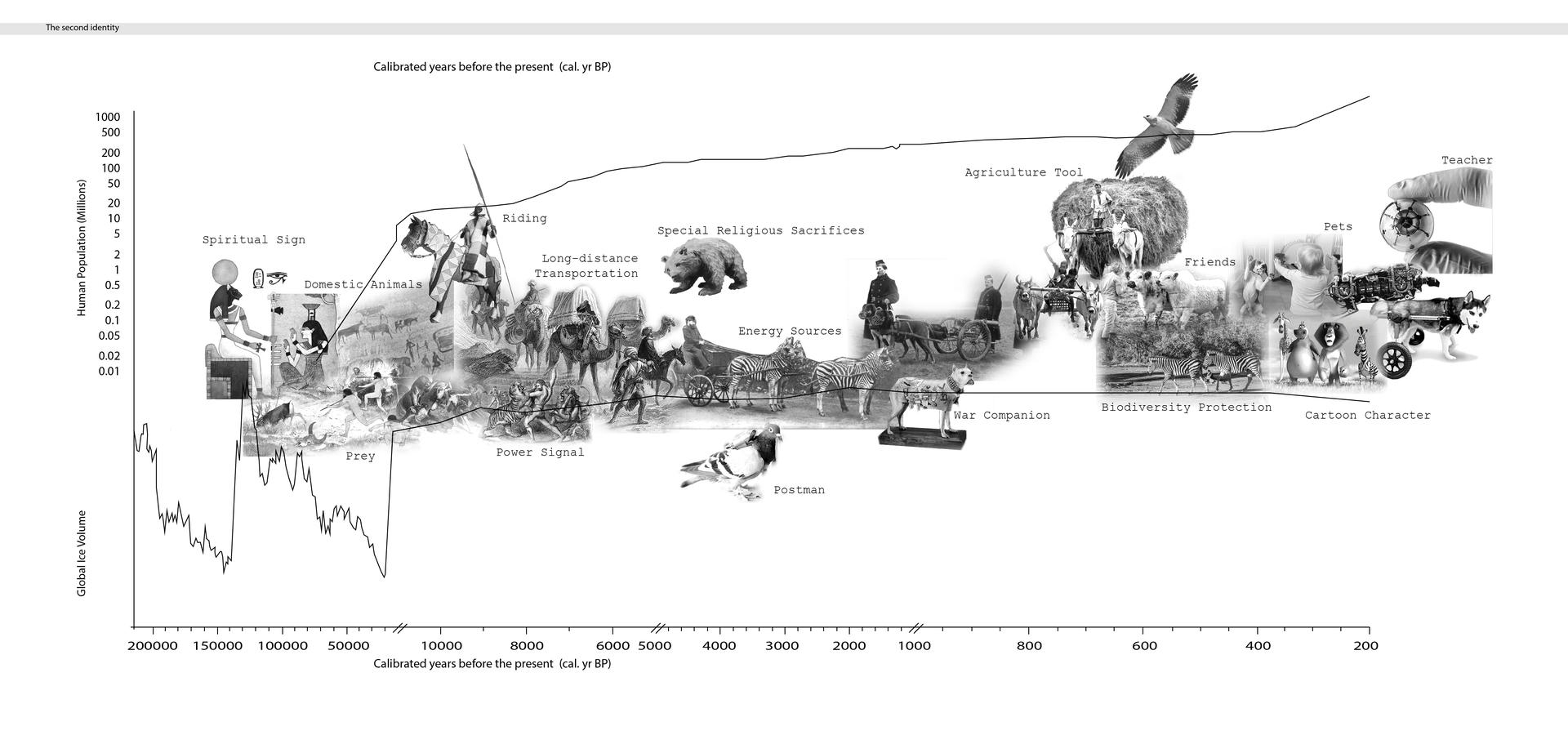
▲ HUMAN-ANIMALS INTERACTION HISTORY TIMELINE
BIBILOGRAPHY
Website:
1. Asian small-clawed otter
https://nationalzoo.si.edu/animals/asian-small-clawed-otter\
2. http://www.wildsingapore.com/wildfacts/vertebrates/mammals/perspicillat…
3. Singapore freshwater habitat
http://habitatnews.nus.edu.sg/guidebooks/freshfish/text/103.htm
4. Plant species searching and study website of Singapore
https://www.nparks.gov.sg/florafaunaweb
5. Garden by the bay website
https://www.gardensbythebay.com.sg/en/attractions/outdoor-gardens/world…
6. Singapore CAD Map
https://cadmapper.com/pro/extracts/991d5822-9b0f-45cb-a110-454be0137726…
7. Otters story in Singapore
https://news.mongabay.com/2018/02/a-tale-of-two-otters-settling-in-sing…
8. Singapore otters knowledge
https://www.reddit.com/r/singapore/comments/bwa4la/questions_about_wild…
9. https://www.govtech.com/em/disaster/singapore-marina-barrage-model-resi…
10. https://www.nparks.gov.sg/biodiversity/our-ecosystems/coastal-and-marin…
11. https://www.rwpzoo.org/animals/mammals/otter-river
Article:
1. The urban Smooth-coated otters Lutrogale perspicillata of Singapore: a review of the reasons for success
2. THE SMOOTH-COATED OTTER Lutrogale perspicillata (MAMMALIA: MUSTELIDAE) IN SINGAPORE: ESTABLISHMENT AND EXPANSION IN NATURAL AND SEMI-URBAN ENVIRONMENTS
3. The current botanical status of mangrove forests in Singapore, January 2013
Conference: Proceedings of the “Nature conservation for a sustainable Singapore”At: Singapore

